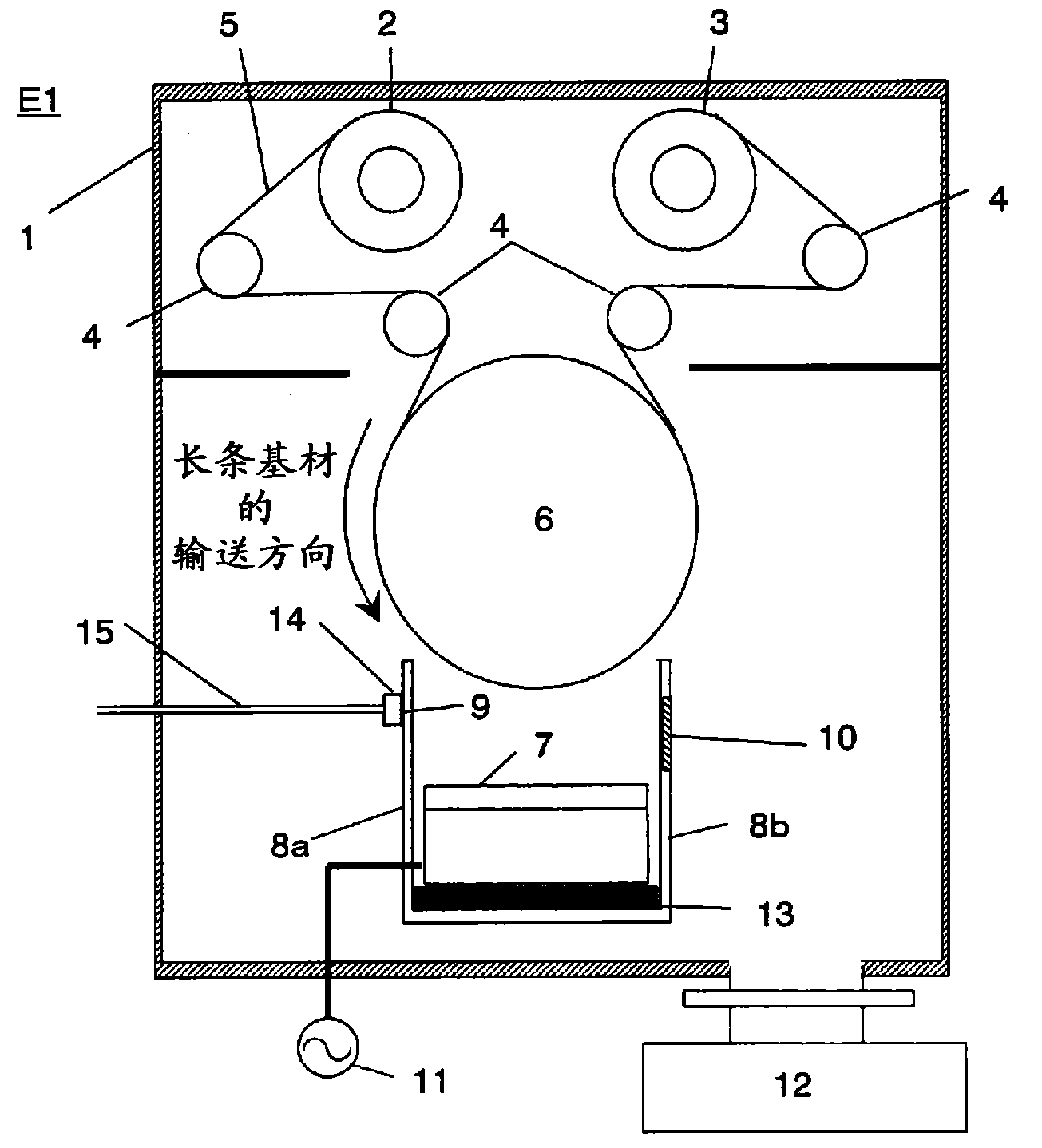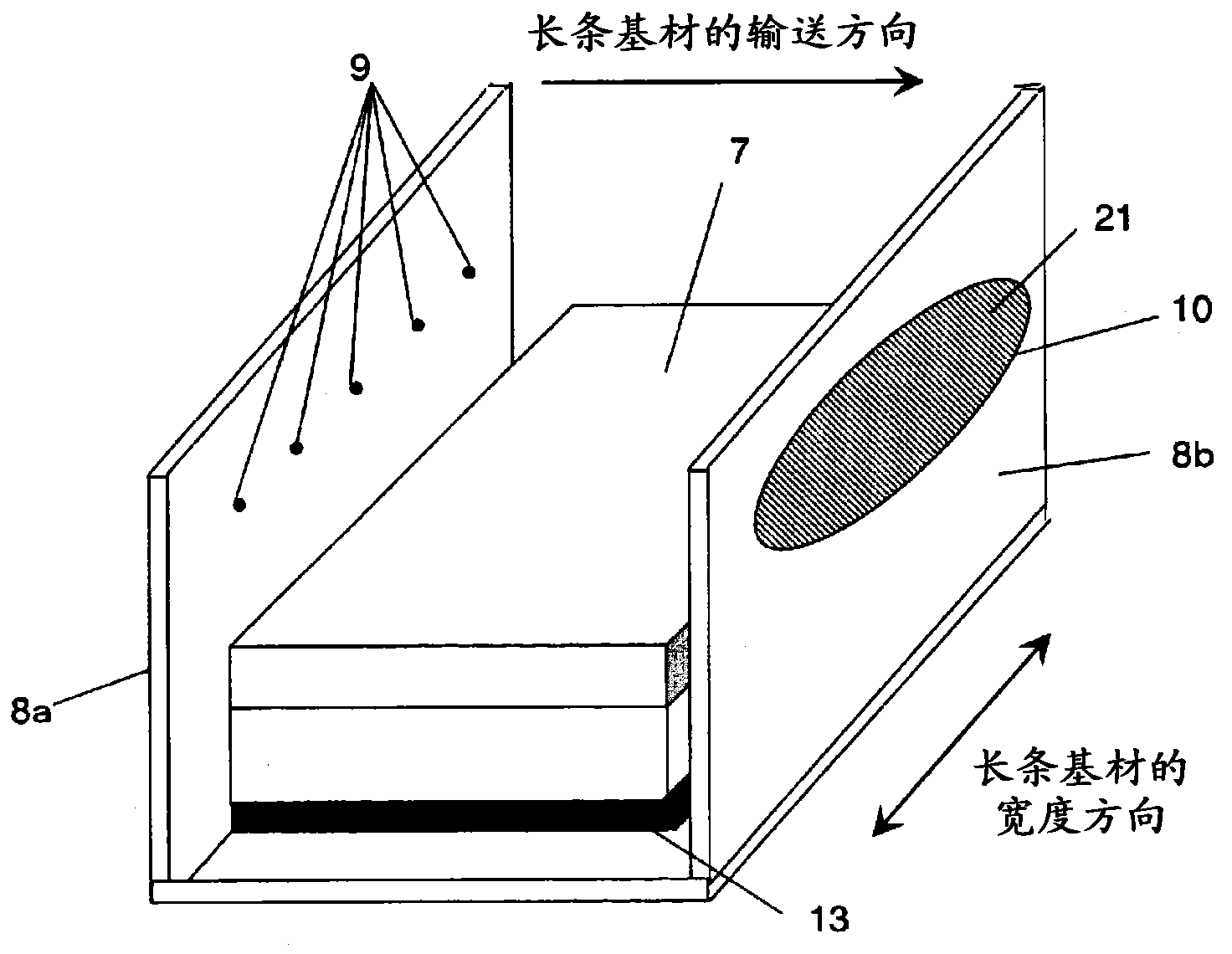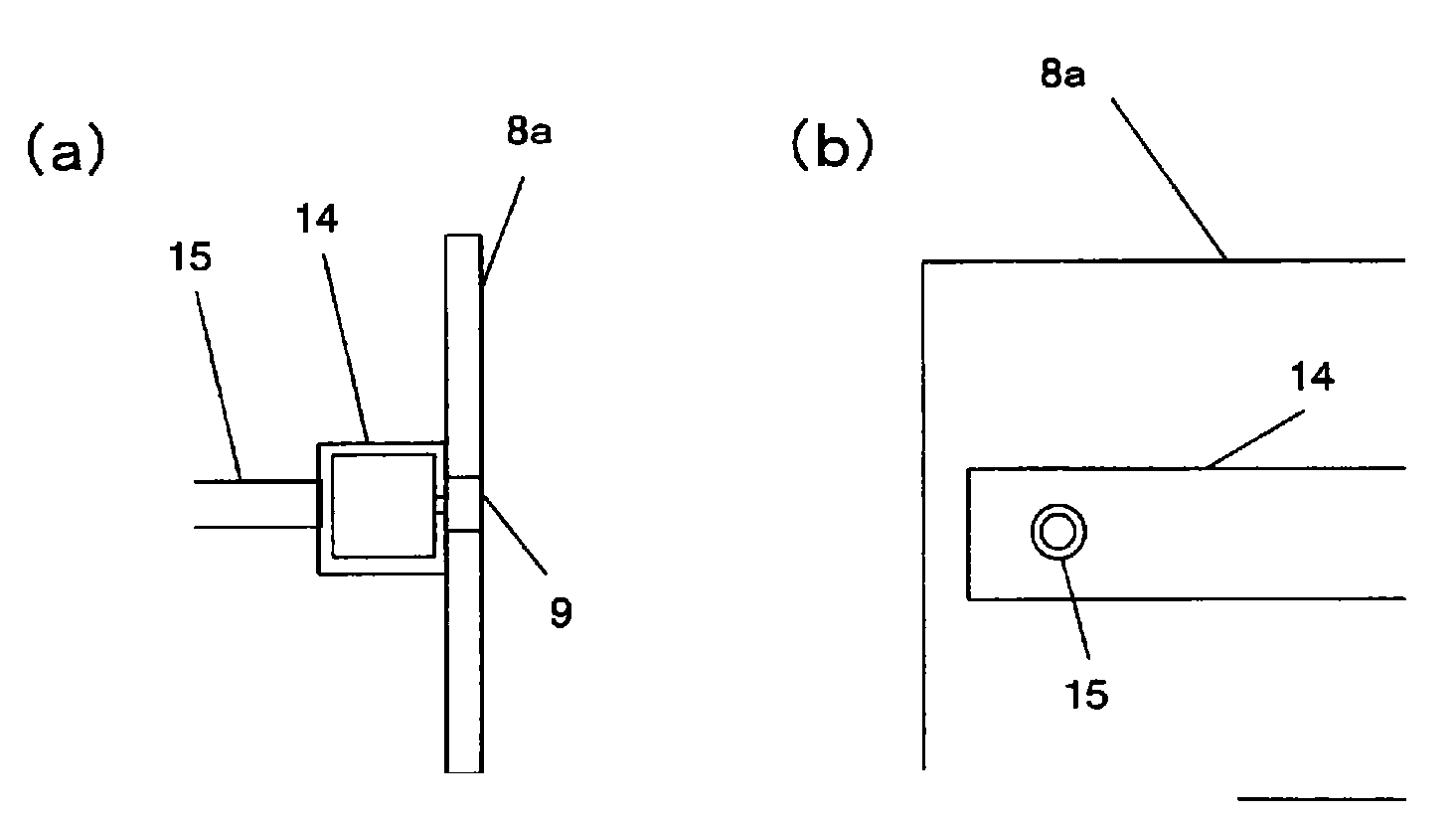Plasma CVD apparatus, plasma CVD method, reactive sputtering apparatus, and reactive sputtering method
A plasma and gas technology, applied in the field of plasma CVD equipment, can solve the problems of unrecorded particle countermeasures and abnormal discharge, etc., and achieve the effects of inhibiting the adhesion and fouling of the electrode surface, inhibiting the film forming speed, and ensuring the film forming speed
- Summary
- Abstract
- Description
- Claims
- Application Information
AI Technical Summary
Problems solved by technology
Method used
Image
Examples
Embodiment 1
[0156] use figure 1 In the plasma CVD apparatus E1 shown, the state of the plasma during the formation of the silicon oxide film and the state of the electrodes after the film formation were observed based on the first embodiment of the silicon oxide film forming method described above.
[0157] In the plasma CVD apparatus E1, the main roll 6 has a diameter of 500 mm and a width of 340 mm. The plasma generating electrode 7 was formed by combining a titanium plate with a length of 236 mm, a width of 80 mm, and a thickness of 6 mm, and a SUS box with a length of 236 mm, a width of 80 mm, and a height of 30 mm. Cooling water flows through the SUS tank to cool the titanium plate. The thickness of the side walls 8a, 8b is 3mm. The height of the side walls 8a and 8b was 50 mm from the main roll side surface of the plasma generating electrode 7, and the length in the width direction was 248 mm. On the side wall on the upstream side with respect to the conveying direction ( figu...
Embodiment 2
[0163] use Figure 4 In the plasma CVD apparatus E2 shown, the state of the plasma during the formation of the silicon oxide film and the state of the electrodes after the film formation were observed based on the second embodiment of the silicon oxide film forming method described above. The gas supply hole row 9 for supplying the source gas is arranged at the same position as in the first embodiment. In addition, at a position 9 mm away from the gas supply hole row 9 for supplying the raw material gas to the plasma discharge electrode 7 side, another row of gas supply hole row 9 is formed, and a carrier gas different from the carrier gas is introduced from this gas supply hole row. Ar. As a raw material gas, 0.1 g / min of HMDSO was vaporized with 50 sccm of Ar as a carrier gas by a gasification supplier (not shown), and mixed with 100 sccm of oxygen. In addition, unlike the source gas, 50 sccm of Ar was supplied from the gas supply hole array in the lower stage. Other part...
Embodiment 3
[0166] use Figure 5 In the plasma CVD apparatus E3 shown, the state of the plasma during the formation of the silicon oxide film and the state of the electrodes after the film formation were observed based on the third embodiment of the silicon oxide film forming method described above. A neodymium magnet 16 with a width of 10 mm and a height of 15 mm was arranged inside the SUS case of the plasma generating electrode 7 , and cooling water was made to flow in the cooling water flow path 17 . Other parts are the same as in Example 2.
[0167] The film formation speed was 45nm·m / min without a magnet, but increased to 110nm·m / min with a magnet. In addition, as shown in Table 2, stable formation was possible without abnormal discharge. membrane. In addition, electrode fouling after film formation is also reduced.
PUM
| Property | Measurement | Unit |
|---|---|---|
| width | aaaaa | aaaaa |
| thickness | aaaaa | aaaaa |
| height | aaaaa | aaaaa |
Abstract
Description
Claims
Application Information
 Login to View More
Login to View More - R&D
- Intellectual Property
- Life Sciences
- Materials
- Tech Scout
- Unparalleled Data Quality
- Higher Quality Content
- 60% Fewer Hallucinations
Browse by: Latest US Patents, China's latest patents, Technical Efficacy Thesaurus, Application Domain, Technology Topic, Popular Technical Reports.
© 2025 PatSnap. All rights reserved.Legal|Privacy policy|Modern Slavery Act Transparency Statement|Sitemap|About US| Contact US: help@patsnap.com



